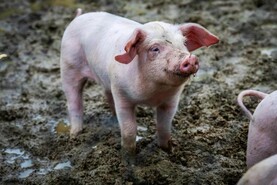The average-sized pig farm is set to lose around €338,000 in 2022, new modelling for September 2022 by the IFA shows.Once the Pig Exceptional Payment Scheme payments are ?taken into account, losses will still remain high at €220,000.
The average-sized pig farm is set to lose around €338,000 in 2022, new modelling for September 2022 by the IFA shows.
Once the Pig Exceptional Payment Scheme payments are ?taken into account, losses will still remain high at €220,000.
Many farmers are now selling pigs to stay in existence, pig farmer and IFA Ulster north Leinster regional chair Frank Brady told the Irish Farmers Journal.
“Pig farmers are in a better position than they were six months ago, but they are still losing money,” he said, adding that some merchants have stopped credit lines to farmers for feed.
“Feed costs are in the region of 160c/kg to 175c/kg and electricity is beginning to hit. Some bills have doubled or trebled.
“Energy prices are up over 100% on the last six months. Most of us are in two-year contracts and those out of contract are being quoted in the region of 50c per unit for electricity.
“For every pig sold, costs have risen to €10 per pig and it used to be €2 to €3. Pig numbers are down by about 10% but it hasn’t hit the bottom yet,” he said.
Surge in input costs
Pig prices are sitting anywhere between 206c/kg to 215c/kg, but with the surge in input costs, Brady said pig farmers need a minimum of 250c/kg, possibly even 300c/kg, in order to survive.
The supply of pigs is drying up fast, according to IFA pigs chair Roy Gallie, who said processors must increase the price paid to Irish pig producers in order to secure a supply of Irish pigmeat into the future.
“Demand for fresh pork meat is stronger in recent weeks for a number of reasons, including the shortage of pigs, the average carcase weights have dropped significantly by circa -6% to -8% and the large volumes of frozen stocks of pork from cold storage have mostly cleared,” he said.
For the last six-week period, pig slaughter figures are down 7% on the same period last year, with some primary processors only in operation four days per week.
EU markets
He said processors must raise the price of pigs in line with comparable EU markets, which are achieving prices 20% higher than the Irish price for the last three months.
“We need to close this gap to repay the amount of debt that has accumulated over the past 400 days and to have a sustainable future in Irish pig production.
“The financial debt on pig farms is at a crippling level,” he said.





SHARING OPTIONS: